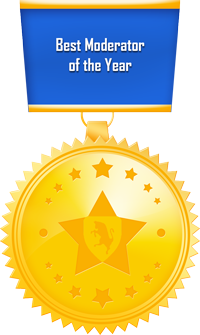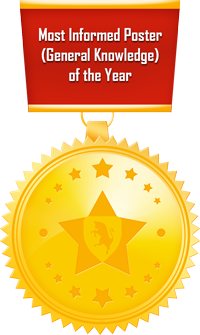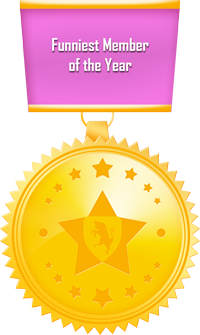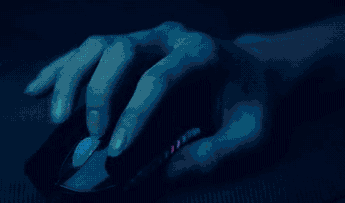http://thelab.bleacherreport.com/the-godfather/
----------
The Godfather
Antonio Conte Won't Come Quietly at Chelsea
By John Foot
Artwork by Virgo A'Raaf
August 11, 2016
When Juventus appointed Antonio Conte as manager in May 2011, they were taking a big risk.
Conte had already failed completely at two clubs, Arezzo and Atalanta, in a short career. Moreover, despite being a former Juventus player, Conte was not exactly an exponent of what is known as "the Juventus style."
This is a reference to the supposedly dignified and gentlemanly way in which Juventus have conducted their business over the years and is often associated with the influence of Giampiero Boniperti, a legendary Juve player of the 1940s, 1950s and 1960s and then president for many years.
It could be argued that the concept of this Juventus style took a blow when Luciano Moggi was an all-powerful figure at the club—an era that included the controversies of the 2006 Calciopoli scandal—but something of that tradition remains.
Conte, however, had by that time fallen out badly with clubs and fans at a couple of stops—often in a public way. On one occasion, police came between Conte and a clash with supporters.
He was certainly not a calm presence in the mould of Didier Deschamps or one of his predecessors at Juve, Claudio Ranieri. Relatively inexperienced and with a tendency to fly off the handle, Conte was not given too much of a chance by many commentators at the time.
It was also difficult for Conte to get himself to be taken seriously. There was, after all, the issue of his dramatic hair transplant. Many saw him as a joke figure. Conte and Juve president Andrea Agnelli, however, proved everyone wrong.
As with so many decisions made by Agnelli, the appointment of Conte was a masterstroke. Conte's Juve swept all before them. They became almost unbeatable, starting what Italians call a "cycle" of success that is still very much ongoing.
In Conte's three years in charge, his team won 102 out of 151 matches, scoring 280 goals and conceding a mere 101. Juve lost just 15 matches in those three seasons. And every one of those years ended with a Scudetto—the first titles for Juve since the dark days of the Calciopoli scandal and the first official championships since 2003.
Nine years may not seem long for most clubs, but this is Juventus we are talking about, a team that carries three stars on its shirt (each star is awarded for 10 Scudetti) and a national fanbase of over 10 million supporters. Juventus are used to winning.
After Conte took them back to the top, comparisons started to be made between him and Jose Mourinho, whose obsession with detail and sense of discipline had brought him so many trophies.
Conte commands Juventus players in a 2011 friendly against AC Milan.
Conte's first Scudetto at Juve was relatively close, with a margin of just four points over Milan. But that first Conte team were also Italy's version of Arsenal's 2003-04 invincibles—the first Italian squad to go through a 38-game Serie A season unbeaten.
They were built around the genius of Andrea Pirlo (13 assists); the solidity and elegance of Giorgio Chiellini, Leonardo Bonucci and Andrea Barzagli at the back (a combination that played to great effect again in Euro 2016); and the fluidity and work rate of Arturo Vidal and Claudio Marchisio (as well as one of Conte's favourites, Emanuele Giaccherini).
All of this was made even more remarkable by the lack of a top-quality striker. The goals were shared around (Marchisio scored nine from midfield)—with 20 players scoring at least one.
And it could not be said that the referees favoured Juve. Only four penalties went their way the whole season. Gianluigi Buffon kept 21 clean sheets. This wouldn't be Serie A, however, without conspiracy theories and the suggestion of scandal. In a Milan-Juventus crunch game, Milan's Sulley Muntari had a goal disallowed by the officials, despite the ball being clearly over the line.
"Muntari's Goal," captured by photographers and videographers, became the latest in the long line of legendary thefts.
It was no coincidence that 2011-12 was also La Vecchia Signora's first season in the new, €100 million Juventus Stadium. This sparkling edifice replaced the disastrous Stadio delle Alpi, which was built for the 1990 World Cup and demolished in 2009, and gave Juve a powerful advantage in terms of home support and financial clout.
None of Italy's other big teams have managed to build their own stadium in order to compete. And all of the signs from Milan, Naples and Rome are that any new stadiums will take years of political wrangling to complete. But in Turin, the local and financial clout of the Agnellis assured that the construction process was swift and efficient.
It pays to have power in Italy. The Juventus Stadium has been Juve's 12th man since 2011.
Image title
Gif by Conal Deeney.
The stats show that Conte creates a true team—what Italians would call "a group"—and not a set of individuals. His squads are, at their best, collectives that work as one unit—and the jobbing players within are just as important as stars.
Hence his penchant for acquiring players such as Giaccherini and, to some extent, his dislike of Mario Balotelli, whom he excluded from the Italian team after the Brazilian World Cup of 2014, calling him up only once in two years.
Conte tends to play three at the back, 3-5-2 or 5-3-2 if the wide men drop back, a system not popular in the Premier League but one that worked superbly for him both in Serie A and with the national team. It allows for pressing and counter-attacking football based on a solid platform, but of course, it helps to have Chiellini, Bonucci, Barzagli and Buffon to form a shield in defence.
A fading John Terry plus Gary Cahill and Kurt Zouma are not at the same level.
Juve lost in the final of the Coppa Italia that first season, but their league form continued unabated for the next two seasons. Players such as Paul Pogba and Carlos Tevez came and went, respectively, but the Juve juggernaut marched on and on.
Juve lost five league games in 2012-13 but won the Scudetto with greater ease as the other big clubs failed to make a real challenge. It seemed a sign of progress in Europe when they won a group with Chelsea in it before exiting the Champions League in the quarter-finals to eventual winners Bayern Munich—though the doubters still claimed Juve could only win in Italy.
Juve went to the top of the league on Day 2 of the domestic season and stayed there until the end. Once again, the goals were shared around (Vidal got 10 from midfield this time), and Juve kept 19 clean sheets, including 16 by Buffon.
Conte's last season with Juve included another triumph, which made his departure at the end even more difficult to explain. Nobody got near them. They won the Scudetto with a Serie A record of 102 points—including 33 victories.
Roma, who finished a distant second, were 17 points behind. Juve had a plus-57 goal difference and finished 45 points ahead of Milan and 42 points ahead of Inter. Conte had, quite simply, killed the rest of Serie A off. It was becoming embarrassing.
Perhaps, as well, it was simply becoming too easy. In 2013-14, to make things even worse for the rest, Juve had not one but two classic strikers—Tevez and Fernando Llorente, who scored 35 goals between them.
Buffon, who turned 36 during the season, seemed ageless, keeping another 19 clean sheets. But the progress Juve made in the previous year's Champions League was undone by a poor showing in the group stage. Real Madrid and Galatasaray qualified for the knockout rounds as the Bianconeri finished third in the group.
Juve advanced to the Europa League semi-final but lost to Benfica. It was a defeat that wasn't meant to happen, especially as the final was to be played in Juventus Stadium, and it was perhaps one of the key reasons behind Conte's shock departure soon afterward. Commentators argued that Conte's European inexperience was proving costly.
This won't matter, however, in his first season with Chelsea, who are, of course, out of all European competitions.
Nobody expected the announcement of Conte's Juve departure in July 2014. He wasn't sacked. That would have been absurd, even in the crazy world of modern football. The club announced they were parting ways by mutual consent (via Sky Sports).
It was said that there had been strong arguments about the transfer market. Over the years, Conte had complained time and again about the resources of other European clubs—the riches of Spain, England and Germany. Conte blamed this gap in spending power for his failures in Europe. Juve disagreed.
"You can't eat in a €100 restaurant if you only have €10," he said, as per Alex Richards of the Mirror (perhaps Agnelli was listening after all, on the basis of Juve's €90 million spend on Gonzalo Higuain this summer).
Agnelli wrote Conte a public letter in which he described a "period of exponential growth" under his outgoing manager.
"Yet in the face of sentiment and personal feelings even a president needs to take a step back," he added. "Barely two months have passed since our last major success, and Juventus must continue on its path. We'll start again from zero. Zero points in the table, just like all the others, and zero wins."
No other details were forthcoming. The real reasons for Conte's departure have never been made clear—another nod to the mysterious nature of Conte's character.
The 47-year-old has often left clubs under a cloud or seemingly at a whim. Before Euro 2016, it would be fair to say Conte was not universally liked in Italy. He was adored by 10 million Juventini when in charge in Turin, but they soon turned against him when he left.
In March 2015, these simmering tensions came to a head when Marchisio was injured in training with the national squad. Juve seemed to blame Conte's training methods. Meanwhile, some Juve fans sent Conte death threats. It was said that he considered resigning.
Conte addresses his Italy players before extra-time of their Euro 2016 quarter-final against Germany.
Conte has been consistently ridiculed for the way he speaks and, of course, for his hair transplant, which has been the subject of numerous jokes, fan chants and banners, including one displayed during a Turin derby in 2001-02, when Torino fans goaded their Juve counterparts as being "like Conte's hair: fake."
Much of this changed with the unexpected success of the national team, which had been dubbed by some as the worst Italian team ever before Euro 2016.
Italy not only played some of the best football in France but also appeared united and tactically innovative. Conte had clearly got the best out of what is undoubtedly, apart from the defence, a relatively weak set of players.
Only the tactical substitution of Simone Zaza in the Azzurri's final game backfired, as the striker fired over the bar in the penalty shootout. Eder, who has a near-perfect penalty record, had been substituted. Conte, however, could not leave the national team without the usual sense of bad feeling. He said he had felt alone during his time with Italy. Perhaps he simply doesn't like being liked?
As a player, Conte was an all-action midfielder—a Duracell Bunny of a footballer. He never stopped running, tackling and chasing. He ran box to box, but he was not merely a water-carrier (though he did carry the water for Zinedine Zidane, among others) and had a good sense of where the goal was, scoring with his feet and his head.
Conte the midfielder was highly successful in a strong series of Juve teams, managed by Giovanni Trapattoni and then Marcello Lippi and Carlo Ancelotti, in the 1990s and early 2000s. He became team captain in 1996.
Image title
Conte and Juventus team-mate Ciro Ferrara celebrate during a Serie A game against AC Milan in November, 1999.
It could also be said that he was unlucky with injuries, as when he had to go off in the final of the Champions League in that year, when Juve defeated Ajax on penalties. Conte was almost criminally undervalued by a series of Italian national team coaches. He won just 20 caps and was never given a proper run in the team.
His management career began—like so many other Italians'—in the tough, rough world of Serie B. Sacked and then re-employed by Arezzo in the same season, 2006-07, he couldn't save them from relegation. With Bari, he won promotion to Serie A in his second season and promptly—in a Mourinho-like move, which he also repeated with Juve later on—left to join Atalanta in 2009.
Conte's time in Bergamo was a low point. He was sent off twice, including during his first match, and resigned in January 2010. The spark was a home defeat against Napoli. Some Atalanta fans were outside the dressing room hurling insults at the manager and the team. Conte had been offended by chants during the game, and there was a confrontation with a group of supporters.
As per Repubblica, only the police prevented a clash between Conte and angry fans.
He quit soon afterward and apologised for his reaction. It later turned out that during his time as Atalanta manager, Conte had sent a text message to the head of the club's ultras, who had a stadium ban, or a so-called "DASPO." Conte said he was sorry the fan could not attend games. This text was later used as evidence in a trial of a number of hardcore fans to show that the club had not distanced itself from some of the more questionable elements among its supporters.
In May that year, Conte took over at Siena, back in Serie B, and won another promotion. His record read: two promotions, one relegation and one disastrous short spell. It was this—and Conte's historic links to Juve and their fans and their history—that led Agnelli to appoint him as manager in 2011.
Most people know something about what might be called Conte's dark side. This alleged dark side can be divided into three parts.
One aspect of it is the connections between Conte and the Juventus doping trials in Turin in the 2000s, which explored the use of drugs and "bogus prescriptions" by Juventus players in the 1990s. The second is the accusations around match-fixing levelled at Conte in relation to events in 2011. And the third is his eccentric and unpredictable behaviour as manager at some of his clubs.
The first two items concern serious issues of criminality and allegations of high-level, organised cheating. The third is a fuzzy question of character and judgement.
Conte was a key figure in the sensational doping trials of the 2000s. His blood levels—in particular, his red blood cell count after an injury in 1996—were of great interest to the court. As per court testimony, expert Giuseppe D'Onofrio stated that these levels proved that both Conte and Alessio Tacchinardi had taken EPO. It was a sensational moment in the trial.
EPO, or erythropoietin, is a genetically engineered protein found naturally in the kidney. If taken regularly, EPO causes bone marrow to increase its production of red blood cells. Having more red blood cells boosts stamina by providing more oxygen.
EPO was, of course, used by numerous cyclists in the 1990s and 2000s. For many years, it was also impossible to trace. There was no specific test for it, and red blood cell levels were used as an indirect indicator of EPO use. Marco Pantani, the famous Italian cyclist, was excluded "for health reasons" from the final stages of the Giro d'Italia in 1999 thanks to one of these tests, which came well after the tests on Conte.
No elite professional footballer has ever been caught using EPO, but there have been high-profile rumours of its use by players.
The EPO issue was probably the most sensational aspect of the Juve doping trials, and it was hotly disputed by the club, their players and many others. In a typically confusing set of sentences and decisions, Italy's courts first decided, in 2004, that Juventus's doctor was guilty of administering substances of various kinds, which constituted sporting fraud. But on appeal, everyone—including the doctor—was cleared in 2005.
Later, in the high court, an even more confusing verdict deemed that the whole issue had fallen under the statute of limitations. Time had run out. Nobody was guilty, but they weren't exactly innocent, either.
The second matter has been all over the British press ever since Conte was appointed manager of Chelsea. Italian football is no stranger to scandal. Many of these scandals have involved different kinds of match-fixing, which has taken on various forms over time but is most commonly associated with players being offered cash to throw or manipulate games.
Image title
Conte arrives at an appeal hearing before the disciplinary commission of the Italian Football League in August 2012.
Calciopoli, however, was not strictly a match-fixing scandal. It was, rather, about the construction of an illegal system of power that guaranteed footballing success mainly through a network of friendly referees and the alteration of the referee selection process.
With the advent of internet betting and the ability to wager in real time on a wide variety of incidents in any one game or a combination of games, match-fixing has become far more lucrative and difficult to stop. Money has flowed into syndicates from the Far East, where much of the betting is controlled.
A widespread system of match-fixing linked to Far East syndicates and organised through Eastern European and Italian fixers was uncovered in 2011 and continues to be investigated across the world in various sports.
On May 28, 2012, 19 players were arrested. Those picked up included then-Lazio captain Stefano Mauri. Conte, then in charge at Juventus, became subject to an investigation related to happenings at his previous club, Siena. He was accused of various charges stemming from alleged fixed matches in Serie B.
A political storm was brewing. Italian prime minister Mario Monti said Italian football should consider taking an enforced hiatus for "two to three years" to clean up its act. Most of the reaction to Monti's statement was negative, but his words quickly went viral.
Conte was accused by a number of players of either knowing about fixed matches or, in some cases, of having ordered matches to be fixed. The evidence focused in particular on some matches that took place when Conte was in charge of Siena and Bari.
He was found guilty by the sporting authorities of not having let them know about match-fixing he had seen happen. They believed he was aware of games that had been altered or fixed and had decided not to tell anyone.
Conte protested his innocence and was supported by his club and many of their fans. But he was banned for 10 months and forced to watch games from a box in the stadium while one of his assistants, Massimo Carrera, took charge. It was embarrassing, to say the least. Soon, however, Conte's sporting sentence was reduced to just four months, and he was back managing as if nothing had happened.
Image title
Conte returned to the touchline in December 2012 for Juventus' match at Palermo.
When Conte was appointed manager of Italy by Carlo Tavecchio, the gaffe-prone head of FIGC, the Italian football association, in August 2014, questions were asked about the appropriateness of such a person being in charge of the national team. But Tavecchio brushed the protests aside.
Nonetheless, the criminal trials were still to be dealt with. Criminal proceedings take an incredibly long time in Italy—the Calciopoli case took a full 10 years from beginning to end. Conte's involvement was by no means over.
A preliminary trial relating to some of the charges opened in Cremona in the spring of 2016, not long before the European Championships were due to begin. In May, Conte—who had asked for a quick trial, a right under Italian law, to clear his name—was absolved by a pre-trial judge of the charges against him. The full criminal trial relating to this particular scandal is set to begin on December 6.
Conte's relief after the Cremona ruling was short-lived. In July, another set of magistrates contested the verdict. More legal processes will follow, and the case is ongoing.
Some journalists were surprised by the Cremona decision. They pointed out that Conte had managed about 30 players accused of match-fixing but continued to say he had not seen or heard anything of interest. Even the magistrate who cleared Conte spoke of his "indifference."
At one point, Conte admitted he was an "an idiot" for not realizing what was going on under his watch.
Conte patrols the touchline during Chelsea's preseason friendly against SK Rapid Vienna in Austria.
So what of Conte and Chelsea, and the spectre of Mourinho?
Is Conte simply another Mourinho, a manager who wins a lot, burns out his players—and himself—and then leaves? He is certainly not a "quiet leader" in the mold laid out recently by Ancelotti, now at Bayern Munich.
Far too much attention is paid to the antics of managers on the touchlines, but Conte is at the agitated end of that particular scale. He shouts, he jumps, he gesticulates, he screams—and that's just in the warm-up.
How will he fare at a club that—since Roman Abramovich took over—has gone through 11 managerial changes in 13 years?
This is a club that sacked a manager six months after he won the Champions League and then let another one go six weeks after winning the Europa League—a club that "parted company" with Mourinho less than seven months after a Premier League title and sacked Ancelotti after second place and a double the year prior.
Let's just say Chelsea have high standards. You have to win there—and win quickly—and even that probably won't be enough to save you.
The pressure will be on. Abramovich cannot afford another disastrous season. And Conte is taking over a team that essentially collapsed last year, shipping 53 goals in the league and losing to Bournemouth and Crystal Palace at home.
It will be a difficult task. The shadow of Mourinho hangs over everything. Conte will argue with the press, with Abramovich and with some of his players. But all of this will be forgotten if he can take Chelsea back to where they think they have a right to be.
Conte has a reputation as a tough guy, a disciplinarian, someone who won't tolerate dissent. His Italian players called him "The Godfather." It's going to be a bumpy ride. It will also be extremely entertaining.
 Buy on AliExpress.com
Buy on AliExpress.com







